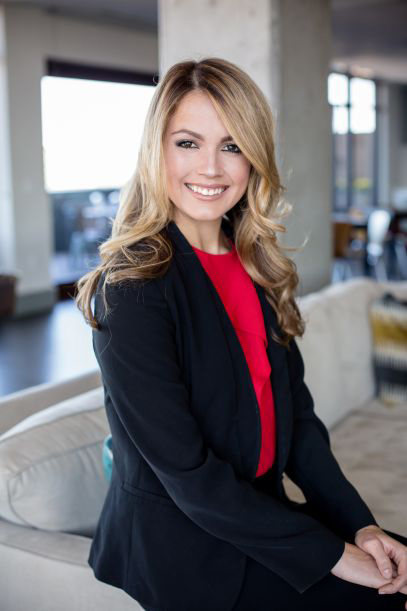
|
在我和共同創(chuàng)始人剛剛萌生創(chuàng)業(yè)想法之后,我的財務(wù)本能就驅(qū)使我打開Excel開始分析,。在接下來的幾周中,,我一直在埋頭計算單位經(jīng)濟效益,構(gòu)建商業(yè)模型,,預測市場規(guī)模和其他數(shù)據(jù)點——例如五年收入預測和客戶擷取成本,。我甚至還建模了各種價格下超過50種不同的轉(zhuǎn)化率,以證實我的假設(shè),。進行所有這些分析時,,我忘記了產(chǎn)品本身。 天真的是,,我們以為這才是建立下一家“獨角獸”公司的第一步,。我們的想法是:如果我們沒有清楚地弄明白接下來如何掙錢,我們的公司就不會成功,。 直到我們的第一位投資者馬克·庫班阻止我們時,,我們才搞清了現(xiàn)實,。他說:“不要計算這些數(shù)字,你們昨天就該把產(chǎn)品做好,?!彼菍Φ摹_M行分析沒問題,,但產(chǎn)品才應(yīng)該是最重要的,。要是能在浪費這么多星期之前就認識到這一點,當然更好,。從那時起,,我們還學到了更多創(chuàng)業(yè)經(jīng)驗: 辨別那些虛假的肯定 朋友、家人甚至陌生人都可能在沒有私心的情況下對你說謊,?!斑@主意真棒!”“我會買的,!”“我喜歡這個概念,!”很少有人說:“這可能會失敗,”或“我不會買的,?!弊鳛橐幻凶非蟮钠髽I(yè)家,不要被那些虛假的肯定誤導了,。真正重要的觀點來自你的消費者,,而且只有他們真正體驗過你的產(chǎn)品才行。想辦法讓你的消費者購買你的最小可行性產(chǎn)品(minimum viable product, MVP),,這樣你就可以減少失敗的可能,。相信我,不要理會七大姑八大姨的熱情吹捧,。 迅速打造產(chǎn)品 按照馬克的建議,,我迅速聯(lián)系了一名工程師來打造我們的第一代產(chǎn)品。我們想要把產(chǎn)品——即便它還不完美——交到消費者手中,,理由很簡單:從我們的目標人群處收集購買數(shù)據(jù),。在建立技術(shù)原型之前,我們在網(wǎng)上進行了調(diào)查,,研究了消費者的興趣,,收集了許多特定數(shù)據(jù)。但出乎意料的是,,在推出第一代產(chǎn)品后,,我們發(fā)現(xiàn)消費者的興趣與調(diào)查結(jié)果截然相反。換句話說,消費者沒有說真話,。因此,,測試我們的最小可行性產(chǎn)品給了我們至關(guān)重要、不可替代的定性反饋,,讓我們對消費者體驗、招聘需求和公司本身有了更深入的理解,。從最小可行性產(chǎn)品測試中了解到的東西,,讓我們踏上了新的行程。 不要試圖做到完美 為了做出第一代產(chǎn)品,,我們需要變廢為寶,,隨機應(yīng)變。如果我們想要做出產(chǎn)品來收集消費者數(shù)據(jù),,我們就沒有時間去完善產(chǎn)品(至少現(xiàn)在還沒有),。所以,我們聚集在工程師的車庫里,,利用二手3D打印部件,、舊電腦配件和一些多余的家居用品做出了我們的產(chǎn)品。老實說,,它很丑,,但是,這個拼湊起來的機器確認了我們的銷量和定價空間,,從而徹底改變了我們之前的單位經(jīng)濟效益,。所以,要隨機應(yīng)變,,不要試圖把每件事都做到最好,。即便你沒有得到投資或沒有團隊,也可以打造產(chǎn)品,。你需要的只是幾個幫助你制作最小可行性產(chǎn)品和研究市場需求的承包人,。 如果你是一名有抱負的企業(yè)家,還有下一步的宏偉構(gòu)想,,你就需要真實的消費者數(shù)據(jù),。打造最小可行性產(chǎn)品,試試它的吸引力,。如果你有真實的消費者數(shù)據(jù),,說服投資者給你的新項目或公司投資就會簡單得多。要從錯誤中吸取教訓:不要沉迷于建立美好的財務(wù)模型中,。最重要的是,,不要害怕打造并不成熟的產(chǎn)品。你可以在未來完善它,但現(xiàn)在,,你需要收集重要的反饋,,這是成功創(chuàng)立公司的關(guān)鍵。 杰基·德·拉·羅莎是一名企業(yè)家,,也是風投支持的隱形公司BeautyTouch的共同創(chuàng)始人,。在BeautyTouch之前,她就職于Radical Ventures風投資本,,并讓公司投資組合的價值達到了5500萬美元,。在波士頓地區(qū),她積極地給創(chuàng)業(yè)者和他們的初創(chuàng)公司提供建議和指導,。(財富中文網(wǎng)) 譯者:嚴匡正 審校:任文科 |
As soon as my cofounder and I came up with the idea for our startup, my financial instincts took over and I immediately opened Excel to run analyses. I spent the following weeks calculating the unit economics, building a business model, and guessing market size and other data points—like five-year revenue forecasts and customer acquisition costs. I even modeled more than 50 different conversion rates at various prices to confirm our assumptions. And through all of this analysis and number-crunching, I forgot about the product itself. Naively, we assumed this was the first step in creating the next unicorn. Our thinking was this: If we can’t see an up-front path to clearly making money, our business won’t succeed. Real life didn’t hit us until our first investor, Mark Cuban, stopped us and said, “Instead of projecting these figures, you should have built your product yesterday.” He was right. Analysis is all well and good, but the product should be the horse leading the cart. Of course, I wish I had realized that before wasting so many weeks. Since then, we’ve learned a few more lessons about running a startup: Recognize false positives Friends, family, and even strangers will lie to you in the most altruistic way possible. “What a fabulous idea!” “I would buy it!” “Love the concept!” Fewer will say, “That’s probably going to fail,” or, “I won’t buy that from you.” As an aspiring entrepreneur, don’t be fooled by false positives. The only opinion that really matters is your actual customers’, and even more so if they’ve been able to truly experience your product. Find a way to get your customers to purchase your initial minimum viable product (MVP), and you will reduce the possibility of failure. And believe me, try to tune out your Aunt Sally’s enthusiasm to a degree. Be quick to build Abiding by Mark’s advice, I quickly reached out to an engineer to build our first-generation product. We wanted to get something—even if it wasn’t perfect—into the hands of our customers for one simple reason: to gather purchasing data from our target demographic. Before building the prototype, we sent out online surveys to gauge customer interest and gather more specific data. To our surprise, after rolling out the first-generation product, it became clear that our consumers’ interests were totally contrary to the survey results. In other words, consumers lie. Therefore, testing our MVP gave us vital, irreplaceable, and qualitative feedback that helped shape the customer experience, our hiring needs, and our company itself. Everything we learned from our MVP testing set us on a new course. Don’t try to be perfect In order to pull together our first-generation product, we needed to scavenge and be resourceful. If we wanted to create something to gather customer data, we didn’t have time to engineer the perfect machine (at least, not yet). So, we set up shop in our engineer’s garage and fabricated our product with used 3-D printer components, old computers parts, and surplus Home Depot supplies. Honestly, the product looked ugly, but, our hacked-together machine validated our sales and pricing variables, which in turn completely changed our previous unit economics. So be resourceful and don’t try to make everything perfect. Build even if you don’t have an investment or team. All you need is a few contractors to help cobble together an MVP and gauge market demand. If you’re an aspiring entrepreneur with the next big idea, you need real customer data. Build an MVP and test traction. Persuading investors to invest in your new project or company will be significantly easier when you have actual customer data. And learn from our mistakes: Don’t’ get lost in building beautiful financial models. Most importantly, don’t be afraid to build an underdeveloped product. You can advance the product in the future, but right now you want to aggregate important feedback that is critical in successfully launching your business. Jackie De La Rosa is an entrepreneur and cofounder of BeautyTouch, a venture-backed stealth company. Before BeautyTouch, she worked in venture capital for Radical Ventures and managed their portfolio valued at $55 million. She is an avid adviser and mentor for founders and their startups in the greater Boston area. |






